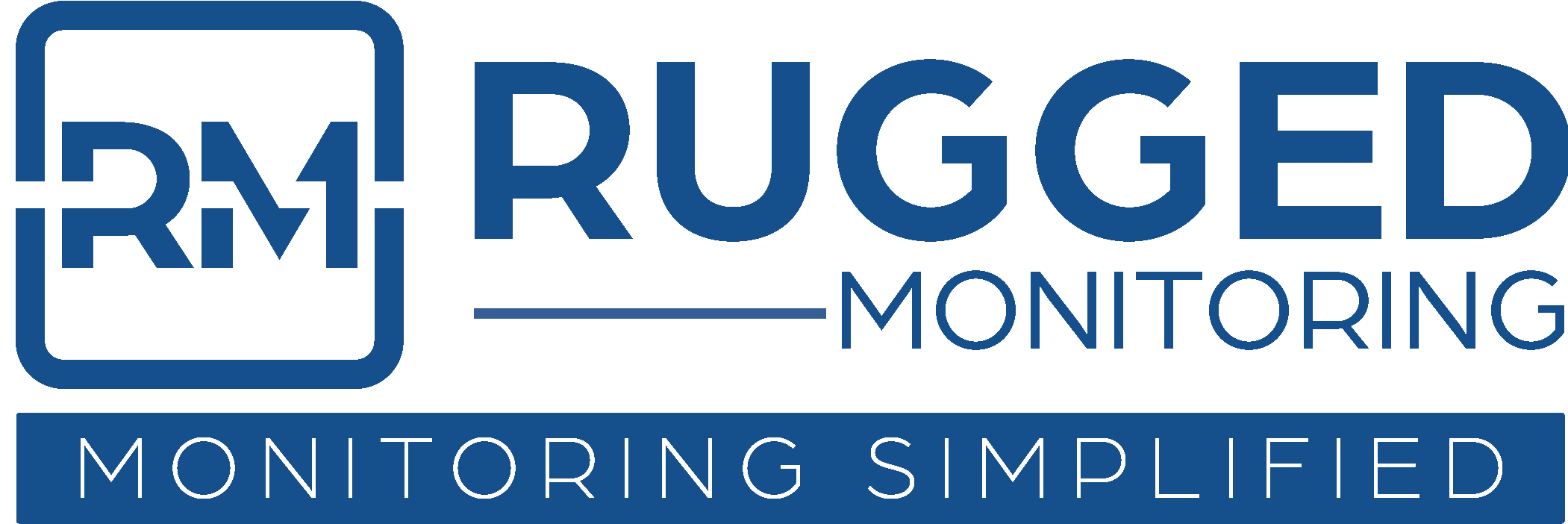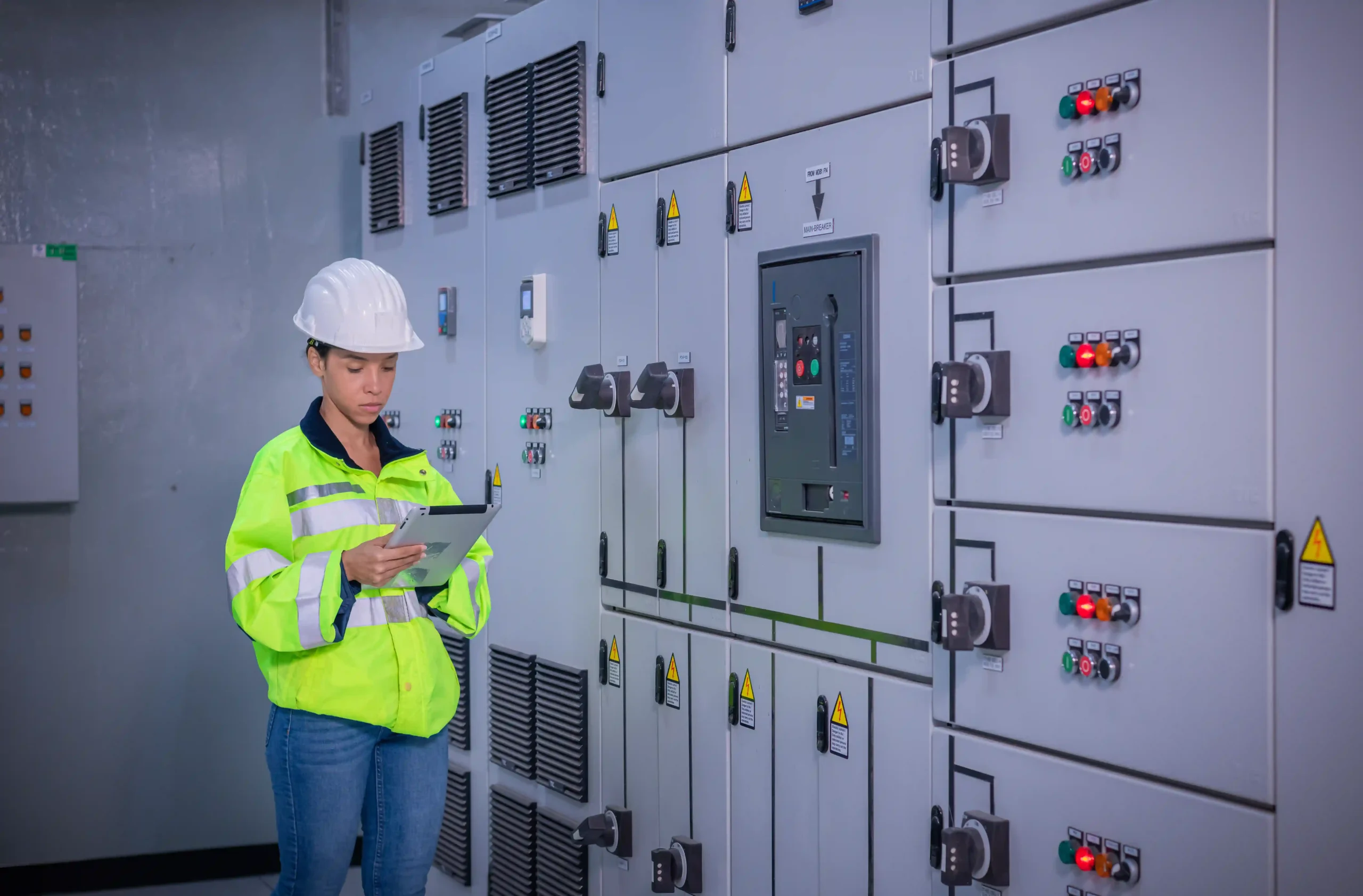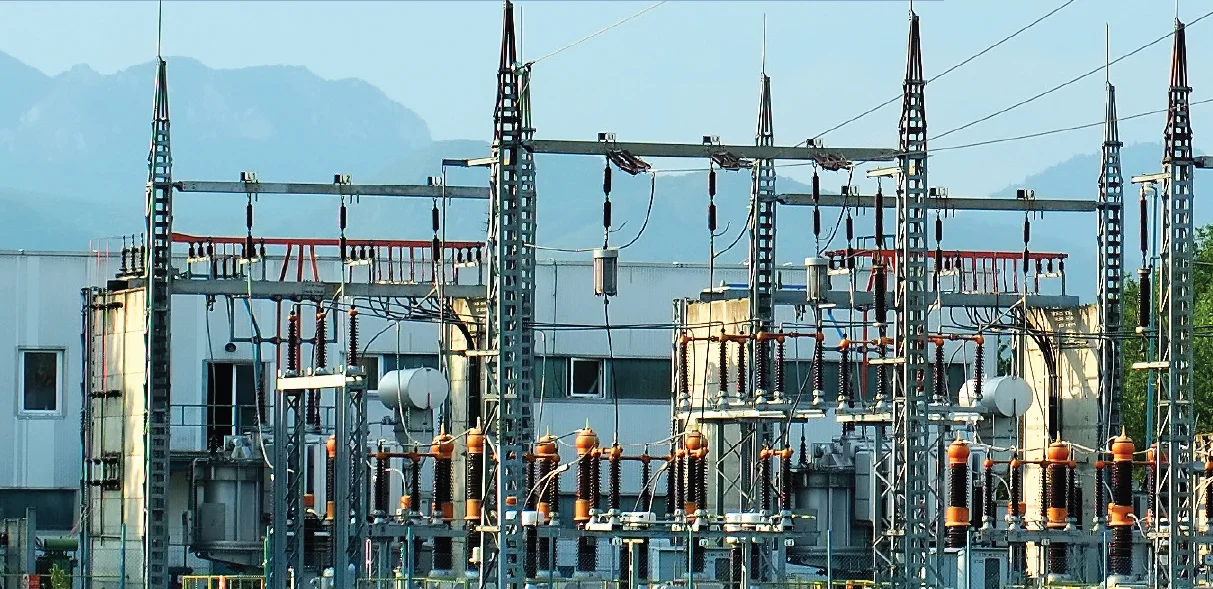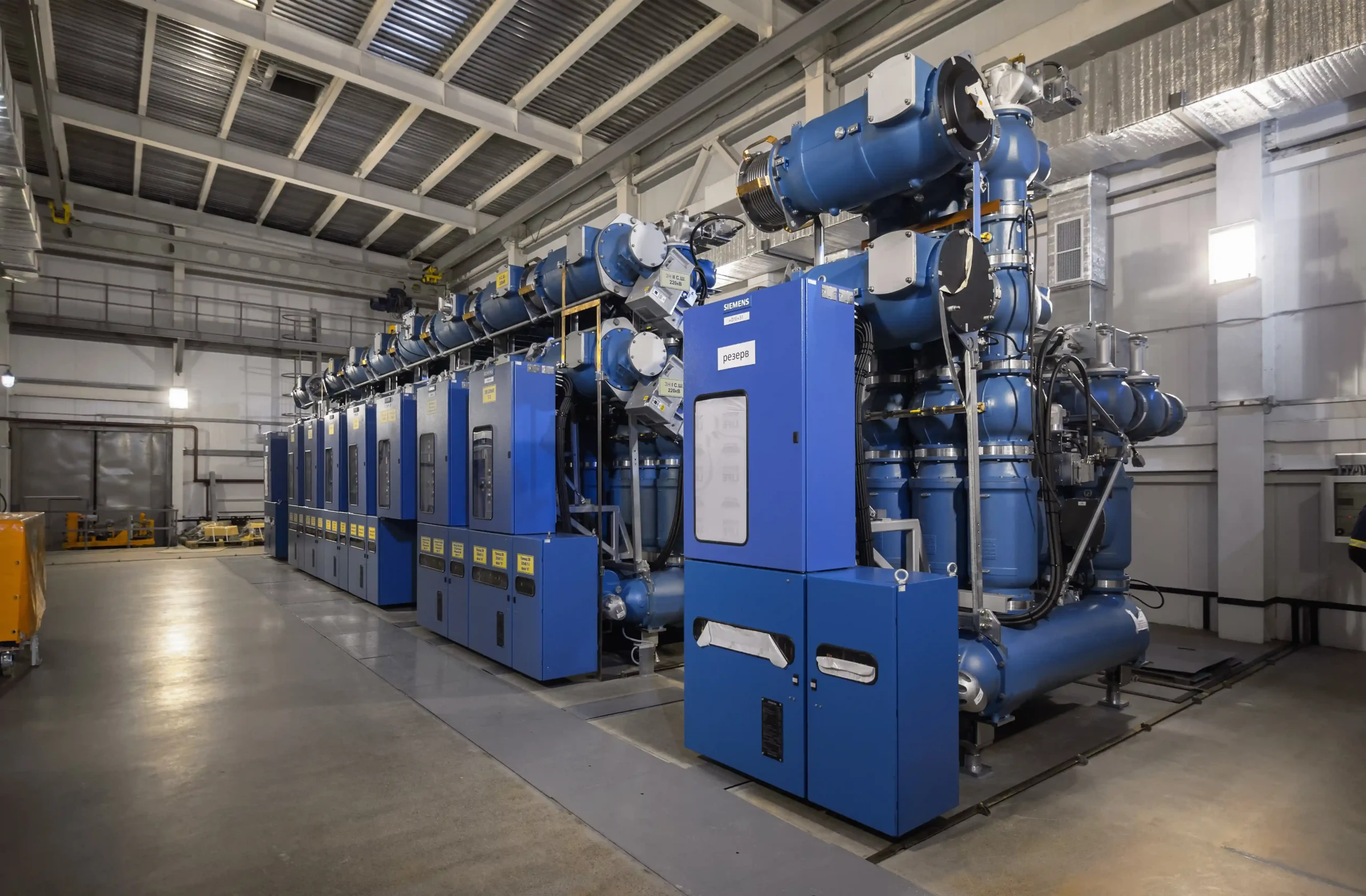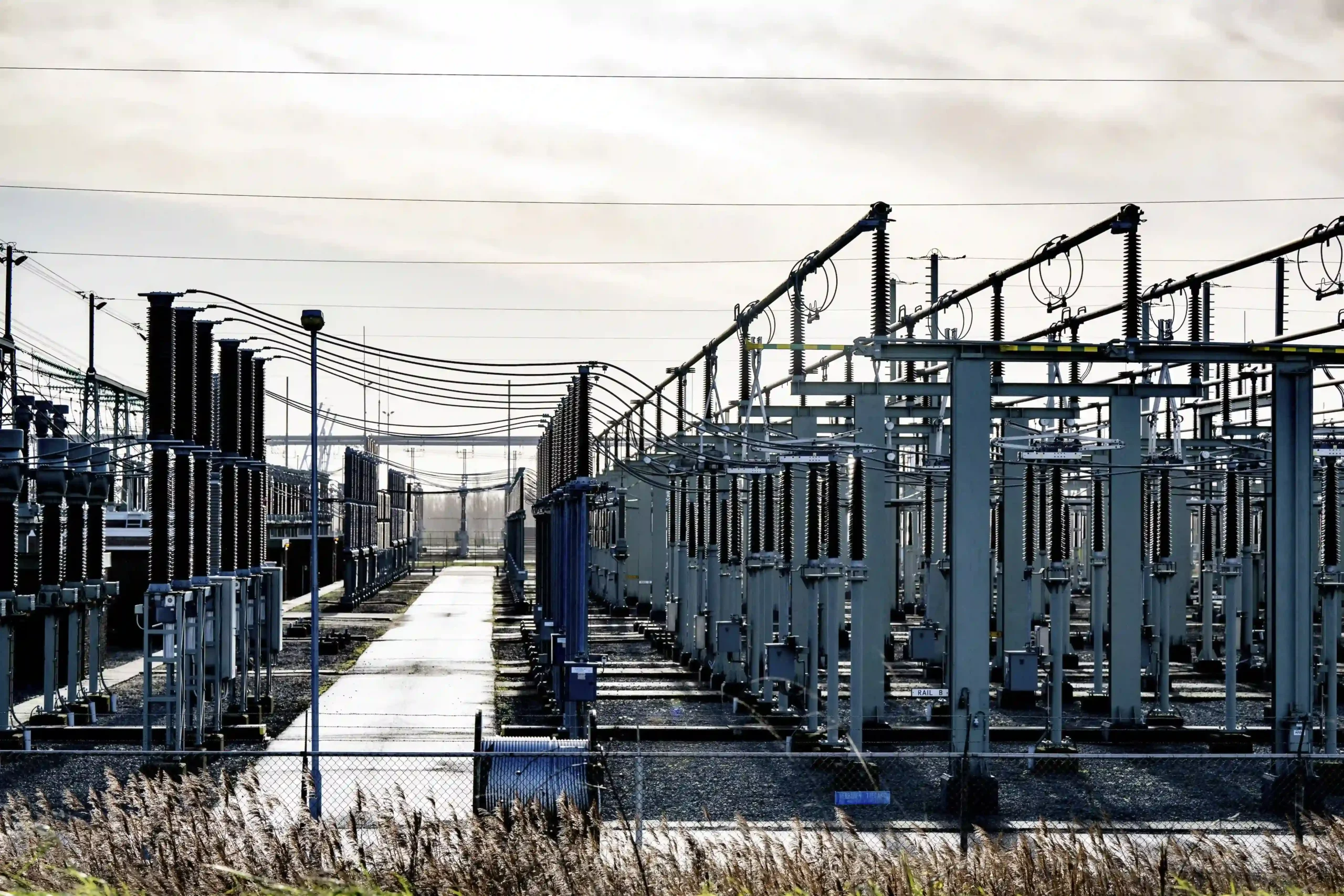Rising power and energy demand across utilities and industries has made switchgear condition monitoring more critical than ever. To support this growing need, utilities must ensure uninterrupted and reliable power distribution through smarter maintenance strategies.
A switchgear is a combination of devices that control, protect, and isolate electrical equipment. At its core, it manages power flow and prevents faults such as overcurrents, short circuits, and arc-flash events from disrupting operations or causing damage. It also enables safe maintenance by isolating faulty sections of the system.
Typically, a switchgear assembly includes circuit breakers, relays, fuses, isolators, control panels, current and voltage transformers. These all work together to keep electrical networks safe and efficient. Despite their robust design, switchgear systems are not immune to failure. Studies show that mechanical faults account for about 30% of overall failures, while insulation failures contribute 26–44%, highlighting the need for proactive monitoring and maintenance strategies.
At this point, switchgear condition monitoring becomes essential to bridge the gap between reactive and predictive maintenance. This modern approach utilizes data-driven analytics and continuously monitors equipment health to detect faults before they escalate into costly failures.
What is Switchgear Condition Monitoring?
Switchgear condition monitoring is an advanced maintenance strategy that uses IIoT-based sensors and monitors to continuously track the operational health of switchgear, ensuring safe, reliable, and uninterrupted power supply. By monitoring electrical, thermal, and mechanical parameters such as temperature, partial discharge, and SF₆ gas levels, these systems enable early detection of abnormalities.
Condition-based switchgear maintenance involves installing sensors and monitors that continuously collect real-time operational data. The monitors transmit the data to the software platform. The software analyzes the data through advanced analytics to identify irregularities, detect early signs of deterioration, and trigger maintenance actions based on predictive insights or threshold limits.
These systems are widely used across critical sectors such as oil and gas, data centers, refineries, steel plants, and renewable energy facilities, offering tailored monitoring solutions to meet diverse operational requirements. Accordingly, condition monitoring solutions can be customized for gas-insulated (GIS), air-insulated (AIS), and medium-voltage (MV) panels, ensuring reliable performance in both new and existing installations.
This transition supports the digital shift toward condition-based monitoring (CBM), a proactive approach that replaces manual, time-based inspections with continuous, real-time insights.
As a result, many utilities and industrial operators today are adopting switchgear condition monitoring systems to enhance the safety, reliability, and integrity of their electrical infrastructure.
Why Switchgear Condition Monitoring Matters?
According to the MarketsandMarkets report, the switchgear monitoring system market is expanding and is predicted to reach USD 3.22 billion by 2030, with an estimated USD 2.17 billion in 2025, at a CAGR of 8.2%. This growth shows the need to upgrade the electrical infrastructure in emerging economies by adopting intelligent monitoring technologies. Moreover, this shift toward condition monitoring also supports global sustainability goals by reducing material waste, minimizing energy losses, and lowering the carbon footprint through optimized equipment life cycles.
Implementing a condition-based monitoring system enhances the grid stability, which addresses the challenges faced by switchgear:
- Improved Safety: Real-time alerts and fault detection adhere to safety standards, enhancing personnel safety and reducing hazardous accidents.
- Fault detection: Continuous monitoring reduces the time from hours to minutes, enabling rapid response and preventing power outages.
- Predictive maintenance: Shifting from reactive to predictive maintenance reduces unplanned downtime by up to 30% and optimizes maintenance costs.
- Extend Asset life: Proactive maintenance extends the lifespan of the asset by continuously tracking switchgear health and improving long-term reliability.
Ultimately, switchgear condition monitoring is not just a maintenance upgrade; it’s a strategic investment.
Key Parameters To Be Monitored in a Switchgear
Switchgear condition monitoring systems measure several critical parameters that affect equipment health. Some of the most common include:
-
Thermal
Temperature fluctuations at critical components pose significant risks, leading to insulation aging, poor contact, and catastrophic failures, including fires and explosions. For thermal monitoring, fiber-optic temperature sensors are used, which are immune to electromagnetic interference. Also, thermal IR cameras are used to identify issues caused by abnormal overheating, such as corroded connections, overloaded circuits, and insulation degradation, to prevent component melting and equipment damage.
-
Partial discharge
Partial discharge occurs in voids, gaps, or on the surface of insulators. If ignored, these minor electrical discharges degrade insulation and result in unexpected outages. For partial discharge monitoring, sensors detect high-frequency to ultra-high-frequency signals, such as electromagnetic pulses and ultrasonic waves emitted by the discharge. An intelligent monitoring algorithm accurately extracts PD signals even in noise-heavy environments such as DS and PWM waveforms, without relying solely on phase-resolved patterns. It detects insulation degradation or surface tracking on busbars and cables, as well as potential arc discharge activity within the apparatus.
-
Hotspot
Recurrent overheating caused by loose connections or overloads can deteriorate the primary circuit, leading to dielectric breakdown and internal arc faults. This may contribute to a power outage. Hotspot monitoring uses fiber-optic sensing technology mounted on breaker contacts and cable terminations to detect thermal profiles and pinpoint the hottest spots on critical components. It enables predictive maintenance and improved asset reliability.
-
SF6 Gas
SF6 gas leakage can cause electrical arcs, leading to in short circuits and damage to insulators, shields, and arcing contacts. In the presence of moisture, SF6 gas reacts with it, forming a toxic byproduct that corrodes metal.SF6 monitoring measures gas pressure and density to track changes and detect gas leaks before substantial loss, reducing costly repairs.
-
Arc flash
Arc flash occurs when insulation failure creates an uncontrolled current path through air, releasing intense heat and pressure that can damage equipment and endanger personnel. For arc-flash monitoring, optical and pressure sensors detect early arc activity and trigger protective relays to isolate the fault instantly. Continuous tracking of parameters such as fault current and arc duration helps prevent internal arc events and ensures safer, more reliable switchgear operation.
Therefore, integrating advanced condition monitoring systems with these parameters enables real-time analytics and a centralized dashboard for switchgear condition monitoring.
Analysis of Different Switchgear Monitoring Methods
Offline methods
-
Traditional Approach
Traditionally, switchgear condition monitoring involves offline testing and maintenance systems. It is a slow, time-consuming, and labour-intensive process, often requiring circuit breakers to be removed from service for inspection.
-
Safety and Maintenance Challenges
During offline testing, maintenance teams were exposed to potential arc-flash hazards when handling live contacts. Reassembly after inspection often led to misalignment, affecting operational reliability and increasing the risk of future failures.
-
Limited Visibility
Since offline monitoring only provides data during scheduled intervals, it offers limited visibility into real-time operating conditions. Critical issues such as rising contact temperature or gradual insulation deterioration may remain undetected between inspections, leading to potential failures in service.
-
Impact of Modern Grid Dynamics:
With the growing adoption of renewable energy and bidirectional power flow, grid equipment, including switchgear, faces increased electrical and thermal stress. Under such demanding conditions, traditional time-based maintenance has become less effective for ensuring reliability.
Despite its limitations, offline testing still holds value. It allows for baseline validation, comprehensive visual inspections, and verification of equipment calibration. These tests are essential for initial system commissioning, fault analysis, and confirming the accuracy of online sensor data.
Online methods
-
Smart, Continuous Monitoring
Online switchgear monitoring introduces a modern, data-driven approach to asset management. Unlike offline testing, it continuously tracks operational health, eliminating the need for manual inspections and minimizing downtime.
-
Real-Time Performance Insights
Each time a circuit breaker operates, online monitoring systems capture critical parameters such as trip and close coil waveforms, contact wear, and partial discharge (PD) activity. These insights help maintenance teams detect early signs of deterioration and perform maintenance precisely when needed.
-
IIoT-Enabled Data Collection
Advanced IIoT sensors installed on circuit breakers, busbars, and insulation systems collect and transmit real-time data to centralized platforms. Intelligent algorithms and AI-based analytics process this data, transforming it into actionable insights and predictive alerts.
-
Remote Accessibility
Online monitoring enables operators to remotely access system dashboards displaying live data, trend reports, and diagnostic results. This significantly enhances safety by reducing on-site human exposure near high-voltage equipment while allowing maintenance teams to manage resources efficiently.
-
Predictive and Cost-Effective Maintenance
By transitioning from reactive or time-based inspections to condition-based strategies, organizations can predict failures before they occur, reduce maintenance costs, and extend equipment lifespan. The result is a more reliable, efficient, and safer power distribution system.
Here is a comparative analysis of offline and online switchgear monitoring for reliability planning.
| Monitoring parameter | Offline method | Online method |
| Data collection | Manual testing, requires shutdown | Continuous, real-time, automatic data capture |
| Operation state | Requires de-energizing switchgear | Active under normal load |
| Safety | High risk (exposure to arc flash and manual handling ) | Minimal personnel risk, remote and non-intrusive |
| Maintenance planning | Time-based, periodic | Condition-based, predictive |
| Fault detection speed | Delayed, post-event | Early detection, real-time alerts |
| Resource requirement | Labour-intensive | Lower manual effort, automated, and predictive |
| Data accuracy & insights | Limited test snapshots to a few, isolated readings | Continuous, trend-based insights |
| Outcome | Post-fault detection | Pre-fault prediction |
Generally, a hybrid approach is considered ideal for better operational performance. It combines offline testing for baseline validation and online monitoring for continuous assurance. This ensures accuracy and reliability without compromising the switchgear’s efficiency.
Switchgear Condition Monitoring Integration with APM
As power systems are evolving towards digitalization, multi-asset integration and centralized visibility have become top priorities for utilities and industries. Asset Performance Management (APM) plays a vital role in this transformation by providing a unified view of asset health, performance, and maintenance needs.
Incorporating switchgear condition monitoring with APM platforms helps asset managers move from proactive to predictive maintenance. APM provides data-driven insights into switchgear parameters, with tailored dashboards, automatic alarms, and robust security measures that comply with industry regulations, seamless integration with industry-standard protocols, and the ability to empower asset experts to interpret real-time data and monitor asset’s continuous behaviour and health.
This integration ensures that switchgear health is monitored alongside other key substation assets like transformers and cables. It enables the adoption of a holistic digital ecosystem that future-proofs assets through predictive maintenance.
Let’s explore how switchgear monitoring can seamlessly integrate into APM and other digital systems.
How Switchgear Monitoring Fits into APM and Digital Systems
The integration of switchgear monitoring and APM enhances the process of connecting real-time condition-monitoring data to APM’s intelligence.
Once integrated, the comprehensive system continuously analyzes parameters such as:
- Electrical and mechanical wear trends over time
- Partial discharge activity (early insulation failure indicators)
- SF₆ gas pressure and leakage rates in GIS systems
- Temperature and humidity variations inside the panel
- Circuit breaker performance and operation time
With AI-driven diagnostics, digital twins, and ML algorithms, asset managers can interpret switchgear condition data, converting it into actionable insights. This allows maintenance teams to prioritize work, forecast failures, and ultimately reduce downtime and lifecycle costs.
This integration is not just theoretical; it’s already reshaping how utilities and industries manage their switchgear fleets in the real world.
Rugged Monitoring has previously implemented an integrated condition-monitoring and asset-analytics solution across switchgear and transformers in the refinery industry. They deployed a combination of specialized sensors, modular condition-monitoring edge devices, and a central analytics platform, namely R501+RM EYE.
As a result, operators gained real-time visibility into insulation degradation trends and early warnings of potential failures. Reduces downtime from 35-40% and cuts costly manual inspections.
These measurable outcomes highlight why APM integration has become essential for modern switchgear reliability and asset optimization.
Why APM Integration Matters for Switchgear Now More Than Ever
The impact of APM integration can be summarized across five key dimensions:
- Predictive maintenance spots issues early for timely action.
- Operational efficiency improves with less manual work and longer asset life.
- Centralized visibility provides real-time monitoring from a single dashboard.
- Reduced downtime prevents costly, unexpected failures.
- Data-driven decisions use historical insights for performance.
- Dynamic alarm limits deliver context-aware alerts that improve trust and response time.
Looking to enhance your APM strategy with advanced switchgear monitoring?
Discover how Rugged Monitoring connects real-time switchgear data with enterprise systems to boost reliability, safety, and performance.
Got questions? Reach out to our experts today and explore how our solutions can meet your monitoring needs!
